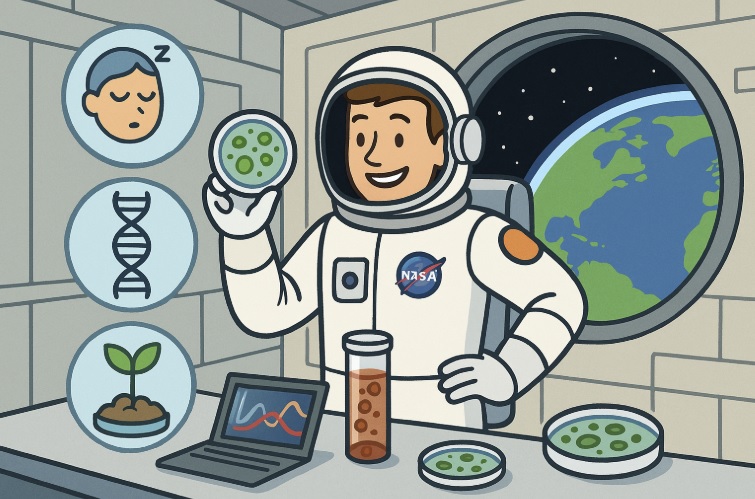Since its launch in 1998, the International Space Station (ISS) has served as humanity’s most advanced orbital laboratory. Orbiting Earth at 400 kilometers above the surface, the ISS is more than just a spacecraft—it’s a unique testing ground for scientific experiments that can’t be replicated on Earth. But what exactly have we learned about life in space after more than two decades of continuous research?
Why Conduct Experiments in Space?
The ISS offers a rare environment of microgravity, where objects appear to float due to the constant state of free fall. This allows scientists to study how physical, biological, and chemical processes behave without gravity’s interference—shedding light on both spaceflight risks and innovations for life on Earth.
Key Discoveries from the ISS
1. Human Health in Microgravity
- Muscle atrophy and bone loss: Without gravity, astronauts lose muscle mass and bone density at an accelerated rate—around 1–2% per month.
- Fluid redistribution: Body fluids shift toward the head, causing vision problems and changes in cardiovascular function.
- Immune system weakening: Spaceflight can reduce immune response, making astronauts more vulnerable to infections.
These findings are crucial for planning long-duration missions to the Moon and Mars.
2. DNA and Gene Expression
- Studies such as the NASA Twins Study (Mark and Scott Kelly) revealed:
- Changes in gene expression after prolonged spaceflight
- Telomere length fluctuations
- Increased inflammation and changes in cognitive speed
Most changes reversed upon return to Earth, but some persisted, suggesting long-term impacts on cellular health.
3. Bacterial Behavior and Antibiotic Resistance
- Bacteria grow faster and form more resilient biofilms in microgravity.
- Some species show increased resistance to antibiotics, posing potential risks for infection control in space.
Understanding these changes helps improve sterilization, drug development, and planetary protection protocols.
4. Plant Growth in Space
- Astronauts have successfully grown lettuce, radishes, mustard, and zinnias in microgravity using hydroponic systems.
- Plants adapt by changing their root growth direction and photosynthesis patterns.
These experiments are the foundation for space farming, a necessity for future deep-space missions.
5. Material Science and Fluid Dynamics
- Without gravity, materials mix and solidify differently.
- ISS experiments have led to better designs for alloys, semiconductors, and fluid-based medical devices.
Microgravity also enables the creation of perfect spheres and crystals, useful in optical technology and drug delivery.
Unexpected Benefits for Earth
Research on the ISS has led to breakthroughs in:
- Osteoporosis treatments
- Water purification systems
- Medical ultrasound protocols
- Telemedicine technologies
- Advanced robotics
In many cases, space-based science comes full circle, improving life back on Earth.
Glossary
- Microgravity – _A condition in which gravity is extremely weak, experienced during free fall in orbit.*
- Telomeres – _Protective caps on the ends of chromosomes that relate to cellular aging.*
- Biofilm – _A slimy bacterial layer that can form on surfaces and resist antibiotics.*
- Hydroponics – _Growing plants in water-based solutions without soil.*
Conclusion
The ISS is not just a symbol of international cooperation—it’s a gateway to scientific discovery. From human biology to agriculture and materials science, experiments aboard the station have already changed what we know about life, health, and survival beyond Earth. As we plan for future missions to the Moon, Mars, and beyond, the knowledge gained on the ISS will guide us every step of the way.


